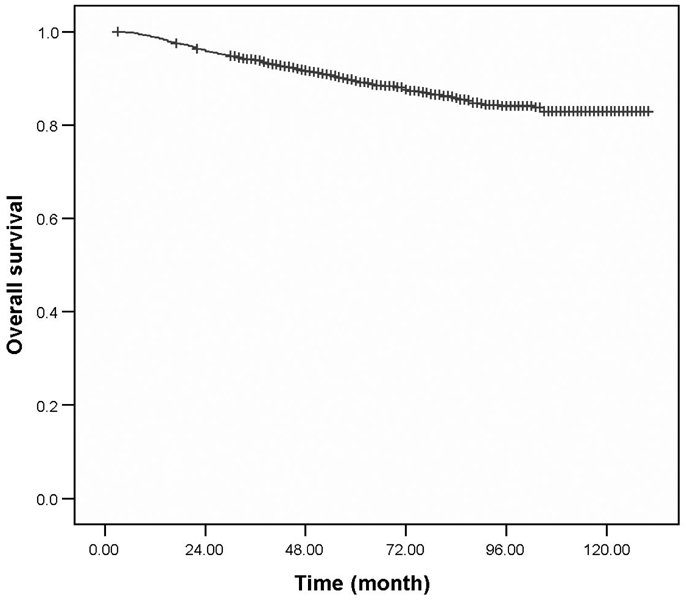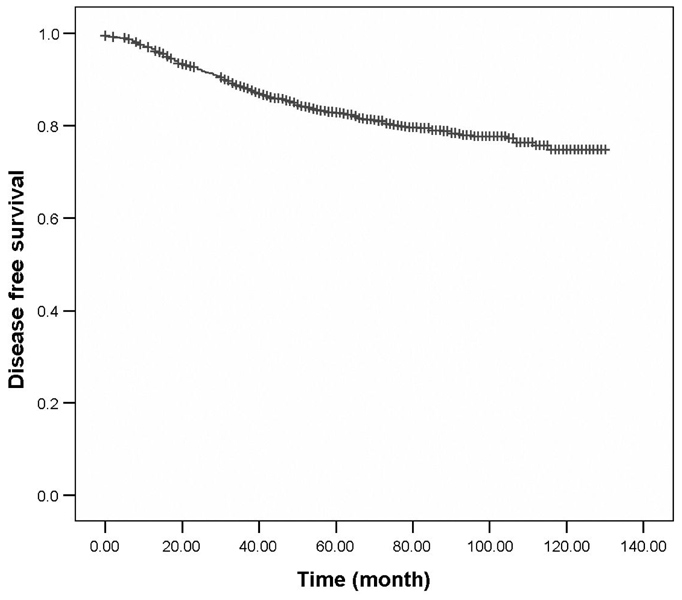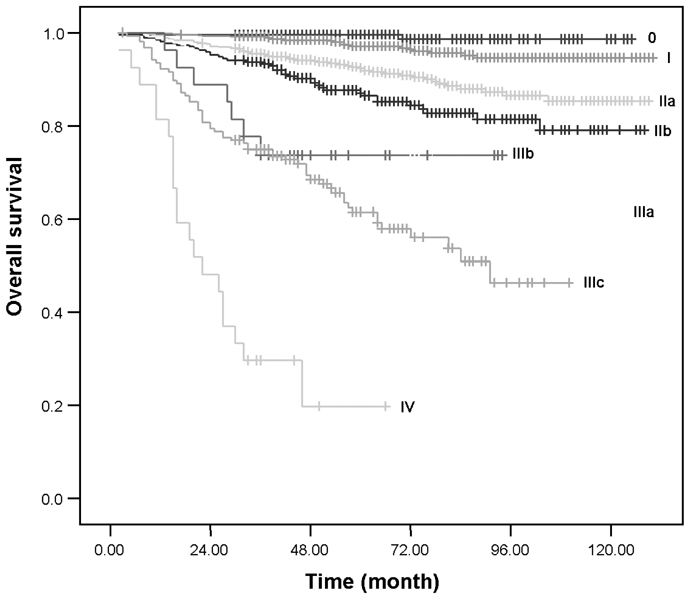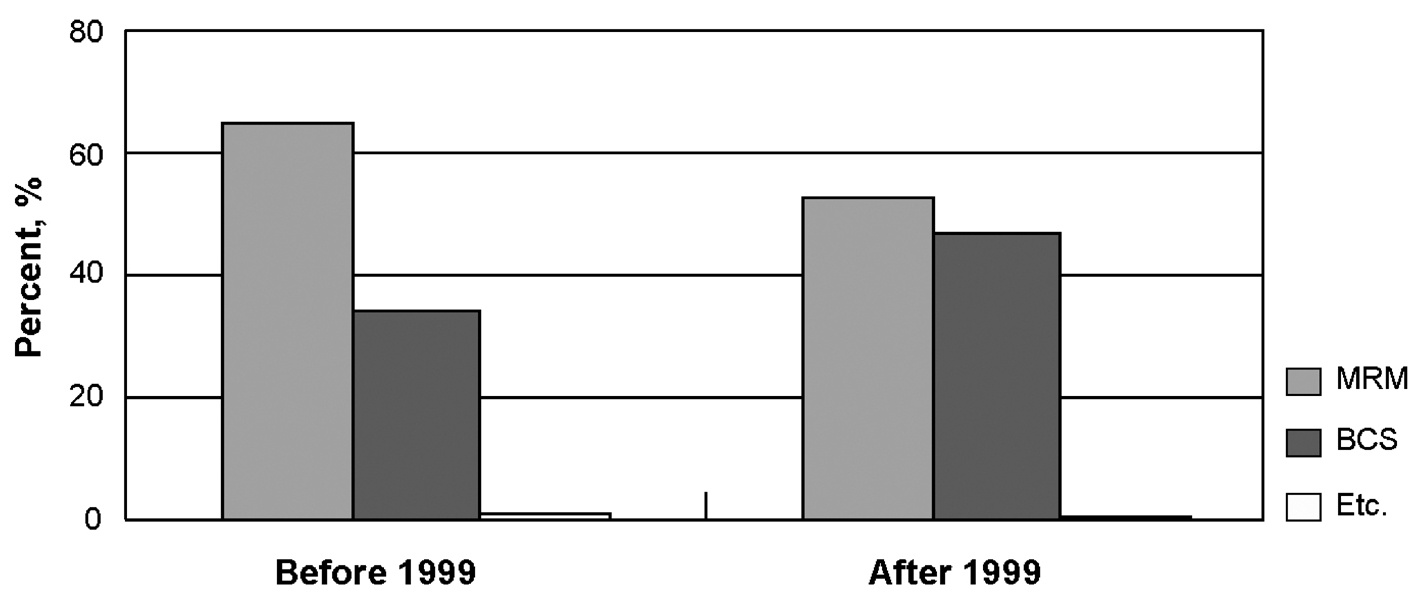Yonsei Med J.
2007 Jun;48(3):465-473. 10.3349/ymj.2007.48.3.465.
Analysis of Prognostic Factors and Treatment Modality Changes in Breast Cancer: A Single Institution Study in Korea
- Affiliations
-
- 1Department of Surgery, Samsung Medical Center, Sungkyunkwan University School of Medicine, 50 Irwon-dong, Gangnam-gu, Seoul 135-710, Korea. jhyang@smc.samsung.co.kr
- KMID: 724102
- DOI: http://doi.org/10.3349/ymj.2007.48.3.465
Abstract
- PURPOSE
To determine the effects of new breast cancer treatments and to provide a baseline for monitoring the development of breast cancer in Korean women, we conducted an analysis at our institution to determine long-term clinicopathological features, survival rates, and prognostic factors. MATERIALA AND METHODS: This study retrospectively analyzed 2,403 patients between Sep 1994 and Dec 2002, who underwent breast cancer surgery at Samsung Medical Center in Korea. Demographic data, pathologic records and surgical records were collected. RESULTS: After a median follow-up duration of 121.9 (range: 2-158.1) months, the 5-year disease free survival (DFS) was 82.8% and the 10-year DFS was 74.7%. The 5-year and 10-year overall survival (OS) rates were 89.4% and 82.9%, respectively. Using multivariate analyses, we determined that the nodal status (p < 0.001), angioinvasion (p < 0.001), positive PR (p < 0.001), and C-erb-B2 (p < 0.001) were independent prognostic factors for OS. The frequency of breast conserving surgery was 33.9% before Dec 1999, and increased up to 44.1% by year Dec 2002. CONCLUSION: Most of the prognostic variables and clinical characteristics of the Korean breast cancer patients were similar to those reported for Western populations. However, the age distribution in Korean patients seemed to be different from that in patients from Western countries.
MeSH Terms
-
Adult
Aged
Aged, 80 and over
Breast Neoplasms/mortality/pathology/*surgery
Female
Follow-Up Studies
Humans
Kaplan-Meiers Estimate
Korea
Mastectomy/*methods/statistics & numerical data
Mastectomy, Segmental/*methods/statistics & numerical data
Middle Aged
Multivariate Analysis
Prognosis
Proportional Hazards Models
Retrospective Studies
Survival Rate
Figure
Cited by 1 articles
-
Clinicopathological Characteristics of Male Breast Cancer
Seho Park, Joo-Hee Kim, Jaseung Koo, Byeong-Woo Park, Kyong Sik Lee
Yonsei Med J. 2008;49(6):978-986. doi: 10.3349/ymj.2008.49.6.978.
Reference
-
1. National Statistical Office. Annual Report on the Causes Death Statistics. 2003. Seoul, Republic of Korea:2. National Cancer Center. Annual Report of Cancer Registry. 2002. Seoul, Republic of Korea:3. Parkin DM, Whelan SL, Ferlay J, Teppo L, Thomas DB. Cancer Incidence in Five Continents. 2002. Lyon, France: International Agency for Research on Cancer.4. Korean Breast Cancer Society. Korean breast cancer data of 1996. J Korean Surg Soc. 1998. 55:621–635.5. Greene FL, Page DL, Fleming ID, Fritz AG, Balch CM, Haller DG, et al. AJCC cancer staging manual. 2002. New York: Springer-Valag;255–282.6. Elston CW, Ellis IO. Pathological prognostic factors in breast cancer. I. The value of histological grade in breast cancer: experience from a large study with long- term follow-up. Histopathology. 1991. 19:403–410.
Article7. Oh YL, Choi JS, Song SY, Ko YH, Han BK, Nam SJ, et al. Expression of p21Waf1, p27Kip1 and cyclin D1 proteins in breast ductal carcinoma in situ: Relation with clinicopathologic characteristics and with p53 expression and estrogen receptor status. Pathol Int. 2001. 51:94–99.
Article8. Allred DC, Bustamante MA, Daniel CO, Gaskill HV, Cruz AB Jr. Immunocytochemical analysis of estrogen receptors in human breast carcinomas. Evaluation of 130 cases and review of the literature regarding concordance with biochemical assay and clinical relevance. Arch Surg. 1990. 125:107–113.
Article9. Campbell JB. Breast cancer-race, ethnicity, and survival: a literature review. Breast Cancer Res Treat. 2002. 74:187–192.
Article10. Hsu JL, Glaser SL, West DW. Racial/ethnic differences in breast cancer survival among San Francisco Bay Area women. J Natl Cancer Inst. 1997. 89:1311–1312.
Article11. Eley JW, Hill HA, Chen VW, Austin DF, Wesley MN, Muss HB, et al. Racial differences in survival from breast cancer. Results of the National Cancer Institute Black/White Cancer Survival Study. JAMA. 1994. 272:947–954.
Article12. The Korean Breast Cancer Society. Clinical characteristics of Korean breast cancer patients in 1998. J Korean Med Sci. 2000. 15:569–579.13. Parker SL, Tong T, Bolden S, Wingo PA. Cancer statistics, 1997. CA Cancer J Clin. 1997. 47:5–27.
Article14. Yancik R, Ries LG, Yates JW. Breast cancer in aging women. A population-based study of contrasts in stage, surgery, and survival. Cancer. 1989. 63:976–981.
Article15. Harris JR, Lippman ME, Morrow M, Hellman S. Disease of the Breast. 1996. Philadelphia: Lippincott-Raven;160.16. Wyld L, Reed MW. The need for targeted research into breast cancer in the elderly. Br J Surg. 2003. 90:388–399.
Article17. Fisher B, Anderson S, Bryant J, Margolese RG, Deutsch M, Fisher ER, et al. Twenty-year follow-up of a randomized trial comparing total mastectomy, lumpectomy, and lumpectomy plus irradiation for the treatment of invasive breast cancer. N Engl J Med. 2002. 347:1233–1241.
Article18. NIH consensus conference. Treatment of early-stage breast cancer. JAMA. 1991. 265:391–395.19. Son BH, Yoon HS, Kwak HS, Lee PC, Ko KB, Kim JS, et al. Clinical analysis of breast cancer surgeries in Korea. J Korean Surg Soc. 2001. 60:470–476.
Article20. Bland KI, Menck HR, Scott-Conner CE, Morrow M, Winchester DJ, Winchester DP. The National Cancer Data Base 10-year survey of breast carcinoma treatment at hospitals in the United States. Cancer. 1998. 83:1262–1273.
Article21. Kim KJ, Huh SJ, Yang JH, Park W, Nam SJ, Kim JH, et al. Treatment results and prognostic factors of early breast cancer treated with a breast conserving operation and radiotherapy. Jpn J Clin Oncol. 2005. 35:126–133.
Article22. Cheng SH, Tsou MH, Liu MC, Jian JJ, Cheng JC, Leu SY, et al. Unique features of breast cancer in Taiwan. Breast Cancer Res Treat. 2000. 63:213–223.
Article23. Fisher ER, Anderson S, Redmond C, Fisher B. Pathologic findings from the National Surgical Adjuvant Breast Project protocol B-06. 10-year pathologic and clinical prognostic discriminants. Cancer. 1993. 71:2507–2514.
Article
- Full Text Links
- Actions
-
Cited
- CITED
-
- Close
- Share
- Similar articles
-
- A study of expression of EGFR and ER as prognostic factors of breast cancer
- Somatic Mutations of TP53 and Prognostic Factors for Primary Operable Breast Cancer: Correspondence
- Prognostic Impact and Clinicopathological Correlation of CD133 and ALDH1 Expression in Invasive Breast Cancer
- Prognosis of Breast Cancer Patients with Ten or More Positive Lymph Nodes
- A case report of 29-year-old male patient with breast carcinoma





